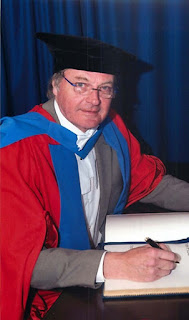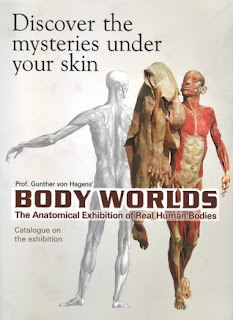Week 8: Nanotech + Art
For this week’s blog post, I
listened to James Gimzewski’s lectures on the history, advantages, and
prevalence of nanotechnology. Previously a researcher at IBM’s Zurich Research
Laboratory, Gimzewski is currently a chemistry professor and nanoscientist at
UCLA. His online lectures gave me a new perspective on the reality of
nanoparticles and nano-scale processes, which exist everywhere from nature to
consumer products. Starting in the 1960s, people began approaching nanomaterials
as potential for accomplishing unmet needs. Nanoscience grew in the 1980s,
following the discovery of graphene and buckminsterfullerene (or the buckyball).
Nanotechnology such as scanning tunneling microscopy (STM) and atomic force
microscopy (AFM) provided scientists with the ability to visualize and even
alter material surfaces on the atomic scale. Nanoparticles have much different
properties compared with their bulk state, which opens countless possibilities
for science, technology, and perhaps art. After all, nanoparticles called
quantum dots are currently being used to develop less toxic cosmetics and paint
(Gimzewski, 2012).
Caption: James Gimzewski (left), provided online lectures
for teaching the public on nanotechnology. Quantum dots (right), are an example
of nanoparticles that emit different colors of light depending on the particle
size.
It’s not
strange to me that nano-scale processes have always existed in nature (e.g.
snowflakes), but I am surprised that thousands of consumer products contain
nanoparticles today. Gimzewski explains that silver nanoparticles are found in
many clothes and food packaging materials because of their antibacterial
properties. Even bottled drinks have coatings that are several nanometers thick,
which reduce gas permeation for longer shelf life. Inspired by the nano-scale
self-organization phenomena in nature, scientists are also researching
nanoparticles for medical applications. For example, Samuel Stupp is the
director of the BioNanotechnology institute at Northwestern University, which
has previously developed nanofibers that assemble into ordered structures and
help repair tissues and organs (Gimzewski, 2012).
Caption: Samuel Stupp (left), is a nanobiotechnology researcher
at Northwestern University, inventing regenerative medicine such as nanofibers
(right). These nanofibers can promote the growth of nerve fibers and repair
spinal cord injuries.
Of course,
introducing these nanoparticles into consumer products has also caused large
public opposition, for fear of unpredictable health risks. This is why the
success of nanotechnology also depends on heavy testing and education on the
advantages, as well as the environmental and health risks of nanomaterials. The
intersection of nanotechnology and art can help bridge the gap between
consumers and nanoscientists. By providing more exposure to the nano-scale
world, artists have the ability to provide new perspectives on this new form of
technology. This concept represents a paradigm shift, as both artists and
scientists are learning to view the world in a different way, discovering
phenomena that might contradict the laws of physics on the macroscale. I believe
that nanotechnology can solve many problems in medicine and the environment, so
I look forward to seeing the growth and evolution of this exciting field!
Caption: A nanoscale violin was created on a crystalline
silicon wafer using electron beam lithography, just to show the fun in
nanotechnology. The first model was created in 1997 at Cornell University, and a playable version was
crafted in 2003 with the help of atomic force microscopy.
References:
Gimzewski,
James. Nanotech Jim pt1. Online video clip. YouTube. YouTube, 21 May 2012.
Web. 28 May 2017.
Gimzewski,
James. Nanotech Jim pt2. Online video clip. YouTube. YouTube, 21 May 2012.
Web. 28 May 2017.
Gimzewski,
James. Nanotech Jim pt3. Online video clip. YouTube. YouTube, 21 May 2012.
Web. 28 May 2017.
Gimzewski,
James. Nanotech Jim pt4. Online video clip. YouTube. YouTube, 21 May 2012.
Web. 28 May 2017.
Gimzewski,
James. Nanotech Jim pt5. Online video clip. YouTube. YouTube, 21 May 2012.
Web. 28 May 2017.
Gimzewski,
James. Nanotech Jim pt6. Online video clip. YouTube. YouTube, 21 May 2012.
Web. 28 May 2017.
Image Sources:
"Brief Bio." Gimzewski Lab. UCLA, n.d. Web.
28 May 2017.
Adriana
Fontes, Rafael Bezerra de Lira, Maria Aparecida Barreto Lopes Seabra, Thiago
Gomes da Silva, Antônio Gomes de Castro Neto and Beate Saegesser Santos (2012).
“Quantum Dots in Biomedical Research”, Biomedical
Engineering - Technical Applications in Medicine, Dr. Radovan Hudak (Ed.),
InTech, DOI: 10.5772/50214.
"Vitae." The Stupp Laboratory. Northwestern
University, 13 May 2016. Web. 28 May 2017.
Patel, Prachi. "Nanofibers Heal
Spinal Cords." MIT Technology Review. MIT Technology Review, 9 Apr. 2008. Web. 28 May 2017.
McNamee, David. "Hey, what's that
sound: Nano guitar." The Guardian. Guardian News and Media, 13 Apr. 2011. Web. 28 May 2017.







Comments
Post a Comment